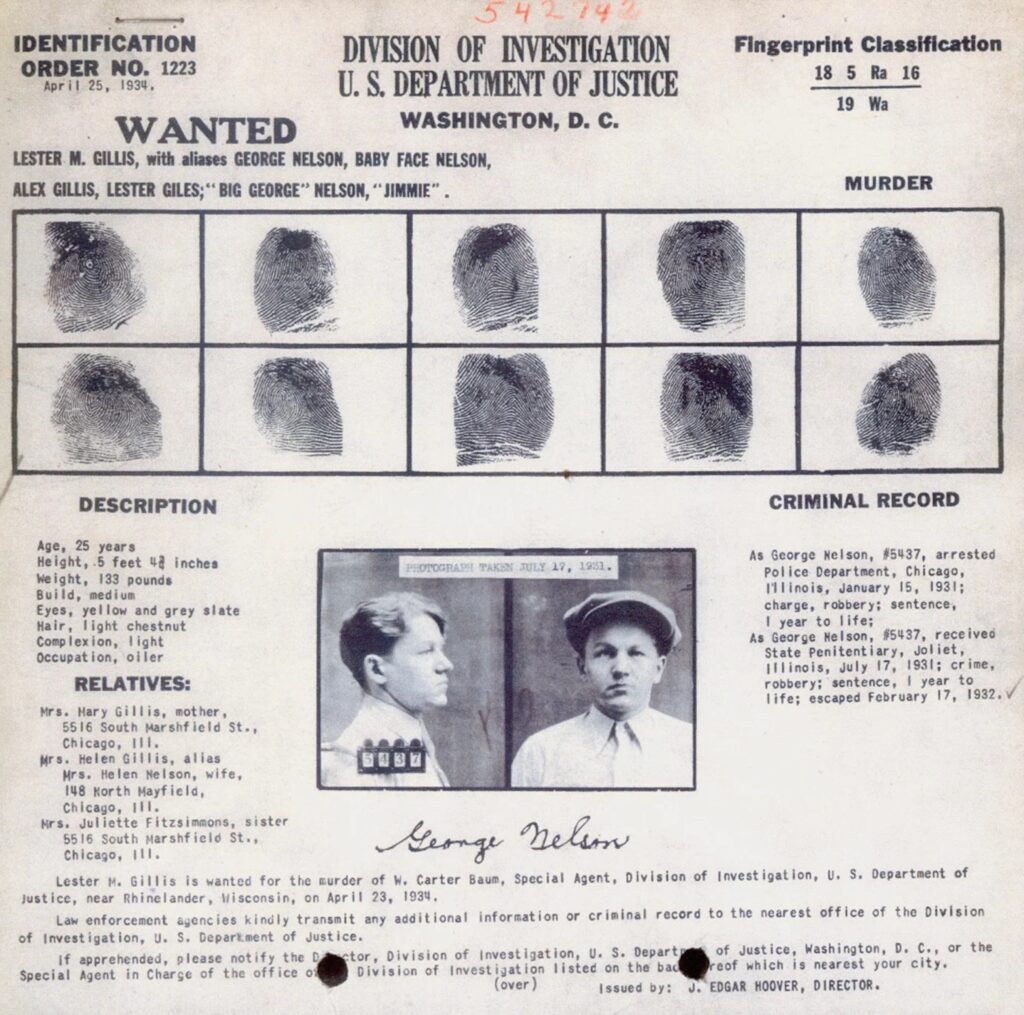In the blood-soaked annals of Depression-era crime, one figure stands apart not for his stature but for his savagery. Standing just five feet four inches tall, with bright blue eyes and cherubic features, Lester Gillis – better known as “Baby Face Nelson” – killed more FBI agents than any criminal in American history.
Born in Chicago’s industrial canal district on December 6, 1908, to Belgian immigrant parents, young Lester learned violence early. By age twelve, he had shot another child in the jaw. By fourteen, he was an accomplished car thief. His boyish appearance, which earned him the nickname he would come to hate, belied a growing rage that would eventually make even hardened criminals fear him.
“He had a baby face. He was good-looking, hardly more than a boy,” recalled one victim, the wife of Chicago mayor Big Bill Thompson, after Nelson stole $18,000 worth of her jewelry. “He spoke more like a child than an adult,” added another witness, seemingly puzzled by the disconnect between Nelson’s appearance and his actions.
In 1928, Nelson married Helen Wawzynak, a teenage salesgirl he spotted working at a Woolworth’s counter. Their relationship would endure until his death, with Helen often accompanying her husband on his crime sprees. After a prison escape in 1932, the couple fled west, where Nelson formed an alliance with John Paul Chase, a California bootlegger who would become his most loyal criminal companion.
However, it was Nelson’s partnership with John Dillinger that would cement his place in criminal history. The alliance began dramatically at St. Paul’s St. Francis Hotel in early 1934, when Nelson declared to Dillinger’s gang: “Before we go any further, I want you all to know I don’t take no orders; I walk into a bank, open fire, kill anything that moves, I grab the money and am outta there!”
Unlike Dillinger, who cultivated a gentleman bandit image, or Pretty Boy Floyd, who gained public sympathy by destroying mortgage papers during robberies, Nelson embraced pure violence. During one bank robbery in Sioux Falls, South Dakota, Nelson spotted a police officer outside and, unprovoked, opened fire through the plate-glass window, severely wounding Officer Hale Keith. “I got one of ’em!” Nelson reportedly shouted with glee. “That’ll teach ’em to interfere!”
The beginning of the end came at Wisconsin’s Little Bohemia Lodge in April 1934, when Nelson killed FBI Agent W. Carter Baum during a botched raid. After Dillinger’s death that July, Nelson became “Public Enemy Number One” but resented that the FBI offered only half the reward they had placed on Dillinger’s head.
Nelson’s final stand came on November 27, 1934, during what became known as the Battle of Barrington. In a brutal shootout near Chicago, Nelson – despite being hit seventeen times – managed to kill both FBI Inspector Samuel P. Cowley and Special Agent Herman Edward Hollis before being driven from the scene by his wife and Chase. He died that evening, and his body was later found wrapped in a blanket near a Niles Center cemetery.
Helen Gillis, who became America’s first female “Public Enemy Number One” during her brief time as a fugitive after the battle, served a year in prison before returning to a quiet life. She never remarried, remaining devoted to Nelson until she died in 1987.
The baby-faced killer’s legacy extends beyond his brutal acts. His violence helped prompt Congress to pass the National Bank Robbery Act of 1934, giving federal authorities broader powers to pursue criminals across state lines. The FBI’s modern training procedures still incorporate lessons from the Battle of Barrington.
“Lester really wasn’t a bad boy. They made him like that,” his mother told reporters after his death. But the evidence suggests otherwise. In just 25 years of life, the cherubic-faced killer had forever changed American law enforcement, proving that the most dangerous predators often come in the most deceptive packages.
Listen to the Podcast Episode: Baby Face Nelson: The Boy Who Became Public Enemy Number One
FOLLOW the True Crime Reporter® Podcast
SIGN UP FOR my True Crime Newsletter
THANK YOU FOR THE FIVE-STAR REVIEWS ON APPLE Please leave one – it really helps.
TELL ME about a STORY OR SUBJECT that you want to hear more about
Step into the storied halls of the Texas Prison Museum and uncover the gripping tales of infamous inmates, daring escapes, and the history of justice in the Lone Star State.

